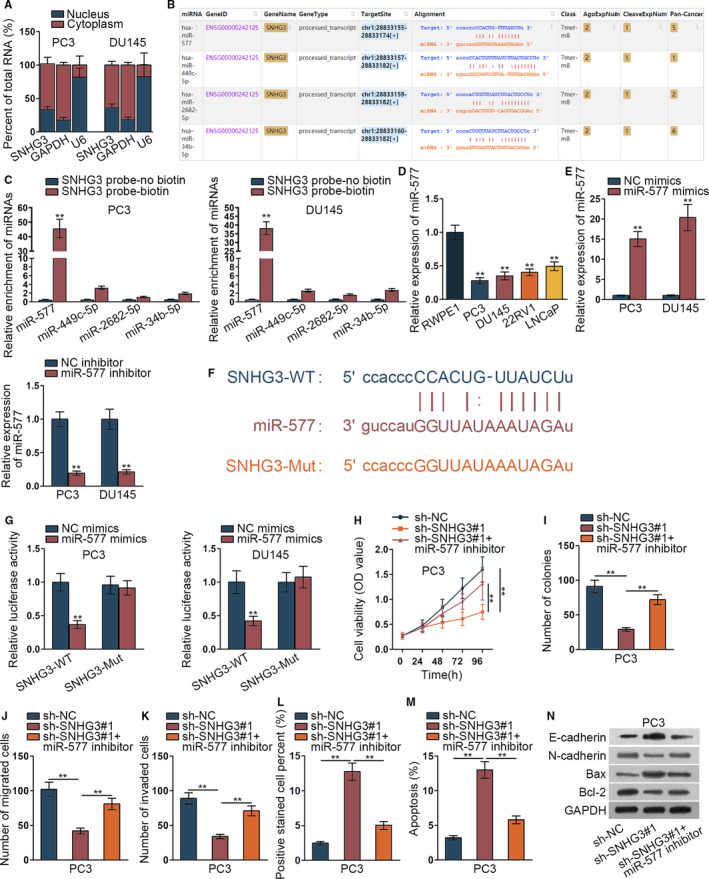FIGURE 2.

MiR‐577 could bind to SNHG3 and regulate the progression of prostate cancer. (A) The subcellular fraction assay revealed subcellular location of SNHG3 in PC3 and DU145 cells. (B) ENCORI (http://starbase.sysu.edu.cn/index.php) was implemented to detect potential miRNAs. (C) RNA pull down assay verified the binding among four miRNAs and SNHG3. (D) The miR‐577 expression in RWPE1 and prostate cancer cells (PC3, DU145, 22RV1, LNCaP) was assessed via qRT‐PCR assay. (E) Inhibition and overexpression efficiency of miR‐577 were investigated by qRT‐PCR assay. (F) The binding site of miR‐577 and SNHG3 was presented according to ENCORI. (G) The luciferase reporter assay was implemented to detect the binding of miR‐577 and SNHG3. (H‐N) Rescue assay of CCK‐8 assay, colony formation assay, tranwell assay, TUNEL assay, flow cytometry analysis, and western blot assay were conducted to know about the relationship of miR‐577 and SNHG3 in PC3 cells. **P < .01
